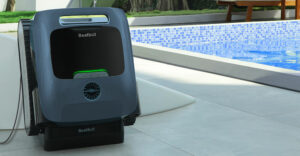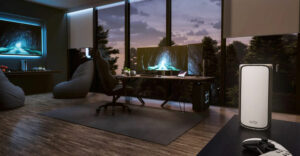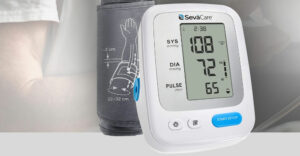
2005 will see two big waves of new laptop computers. The first, based on Intel’s new Sonoma platform, rolled in last week. The second, based on AMD’s new Turion processor, is still several weeks off.
Sonoma is the code name for Intel’s Centrino bundle, which remains one of the most effectively sold concepts from that company in some time. This recent version sports improvements in system performance, wireless capability, audio and — even though many of us aren’t supposed to be interested in this — gaming.
The one aspect of this platform that remains unique is Sonoma’s stable image component. While consumers couldn’t care less, corporations demand a high level of stability in hardware so they don’t have to manage a lot of variability in software. To date, none of Intel’s competitors have stepped up to this market requirement. This 12-month stable platform promise remains Intel’s sustaining advantage with this launch.
While graphics are not officially part of Centrino, anyone who watches this market closely will tell you that graphics have slowly crept into the bundle and that most Centrino systems sport Intel-embedded graphics. For PowerPoint slides, this hasn’t been a problem. But for those of us who like to kill time on the road playing video games, this has been a huge benefit to booksellers. That is because, up until now, Centrino systems didn’t have the power to play a current-generation game.
Some of the old systems from late last year have game frame rates measured in seconds per frame rather than frames per second, and some won’t render the game screen at all. While a number of overly controlling IT buyers may see this as an advantage, many of us who use these systems do not. I’ll reserve my own opinion until we have a couple of the new systems in to test, but, on spec, the change does look promising, even though I’d probably still favor discrete (meaning non-integrated) graphics solutions from nVidia or ATI.
HP: The Advantage of Luck
For some time it has been clear that IBM ThinkPads are favored in the business market. Customers, when asked for their opinions, would say, “Build us something like a ThinkPad.” The vendors would go out and build something that had some similar attributes but generally bore very little relationship to the ThinkPad. About a year ago, HP decided to actually follow the customers’ advice, and their new products look and feel as if they came from IBM.
HP has being trying to develop its own identity, so building a product that looks as if someone else built it wouldn’t appear to be the smartest move. Except for one thing: the sale by IBM of its PC unit to Lenovo, a sale that is now tied up under government review. HP now is well positioned to take business from IBM, having both the most similar line and the most similar business model. Meanwhile, IBM itself is stuck between a rock and a hard place, unable either to articulate the benefits of a move that now may not happen or to recover from IBM Corporate’s disparaging remarks after the proposed sale was announced.
HP has several additional advantages in its line. It has a product with a 15.4-inch screen, thought to be the new standard for business notebooks; it has an ultra-light notebook that can be configured as a tablet or regular laptop; and it has an innovative docking solution that places the notebook screen at the proper height for desktop use. Finally, HP has a new eight-cell travel battery that can give you five to eight total hours of use.
HP’s true advantage in this market may be its focus on an overall mobile solution. With the most complete handheld line, the largest notebook line, and the deepest penetration in the networking infrastructure (both wired and wireless) that supports the mobile worker, HP should be considered the leading mobile vendor in its class.
Dell: Staying the Course
From a standpoint of market share, Dell is the leading laptop vendor. It has two 15.4-inch products in its new business lines, and the company as a whole has come a long way in the last several years. Gone are the bricks of the 1990s, and while you’ll probably never confuse a Dell box with a Sony or an Apple, the machines are better looking then they have been.
You may have noticed that Dell notebooks are in as many, if not more, TV shows and movies than any other PC company’s product line. Even Apple, the king of product placement in this industry, seems to be falling behind Dell.
What differentiates Dell in this segment is that it offers a good product at a good price. It is a simple message, and Dell executes on it better than most. The products typically aren’t the most desirable, nor are they the most advanced, but based on market share, you have to conclude that Dell is still seen by the majority of buyers as the best value.
Two of the products in Dell’s consumer line are flagship offerings. One uses the unusual 12-inch-wide screen that could become the new standard for road warriors. The other, the XPS, is a power box unmatched by any other major brand. We’ll update you when the new versions of those products are released.
Gateway: Most Improved
For several years now, when Gateway brought out new lines and asked me what I thought, I said “Interesting.” That was my way to avoid commenting on how inconsistent and just plain unattractive they were. The company’s new line looks like a nice blend of Toshiba and Sony concepts. It is clean and modern, with well-defined lines and a consistent industrial design. It should show well on shelves and help significantly with the firm’s strategy to become a true global PC brand again.
The problem is that Gateway hasn’t actually launched its new line yet, which means I can’t tell you about it. I can say that I’m impressed with how it looks and that it is a strong indication that the eMachines/Gateway merger has been a success. I can also say that Gateway is the most improved vendor in this segment. Check out its announcement in a few days and let me know if you agree.
2005 Trends
In PC deployments, I’m seeing a strong push to move from desktop to mobile, with some roll-outs jumping from 30 percent mobile to 60 percent midway through, suggesting a huge push to allow people to work wherever they are. The new products are, across the board, more secure, more reliable and more attractive than the products that came before. Even the more staid vendors seem to have a twinkle in their eyes when it comes to design.
Look for more panoramic screens and more creative ways to connect you through services back to the selling vendor. One thing that I still think the industry is missing is a notebook/desktop computer bundle — such as the one Sharp came up with last year — that could better address both the performance and the mobile needs of the user. This would be especially true if you bundled it with a remote-access product that would allow users to leave most of their files on the more secure desktop.
Intel has opened the year with a powerful first move, AMD will be responding shortly, and we are likely to see a very powerful response. Whatever happens, one thing is sure: We are moving to a new mobile world.
Rob Enderle, a TechNewsWorld columnist, is the Principal Analyst for the Enderle Group, a consultancy that focuses on personal technology products and trends.





















































